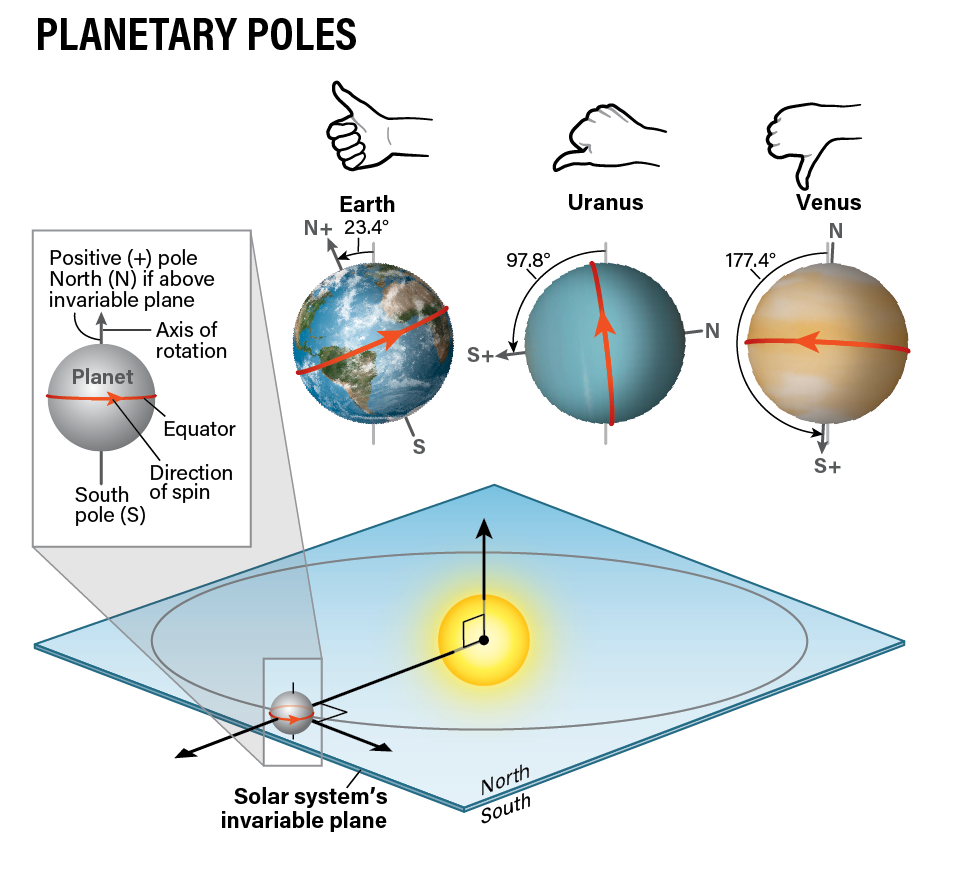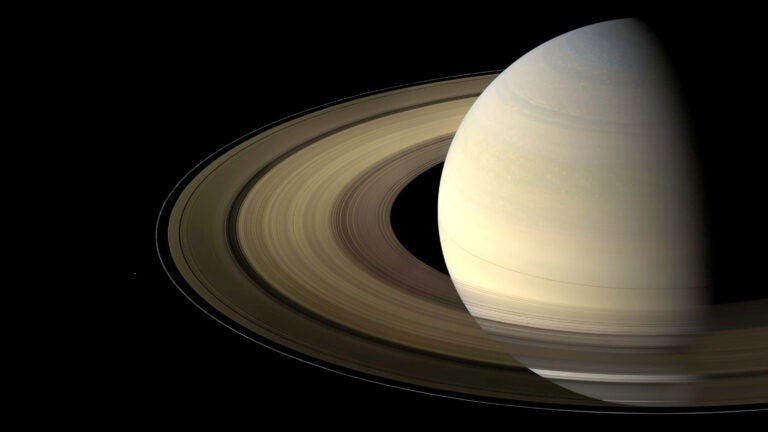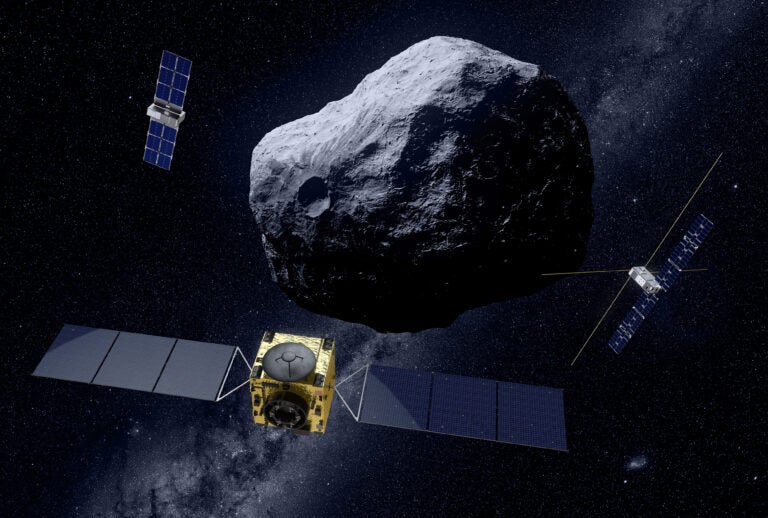
How do we distinguish the north pole from the south pole of planets other than Earth? Is it an arbitrary selection, or is there a magnetic field direction we rely on?
Gary George
Cincinnati, Ohio
According to the International Astronomical Union (IAU), a planet’s north pole with respect to its rotation is the pole on the north side of the invariable plane of the solar system. This plane is perpendicular to the angular momentum vector of the solar system and also passes through its barycenter (its center of mass).
Angular momentum is related to rotational motion. As an object spins, its angular momentum vector points along its axis of rotation, as defined by the right-hand rule. This rule states that if you hold out your right hand and curl your fingers in the direction of rotation, your thumb points along the axis of rotation. The solar system’s angular momentum consists of the contributions of the Sun and all the planets, asteroids, comets, etc., orbiting it. From this, you can calculate the solar system’s axis of rotation. The invariable plane, then, is perpendicular to this axis and passes through the barycenter — the center of mass of the solar system.
The invariable plane is not exactly the ecliptic, which is defined as the plane of Earth’s orbit around the Sun, though it’s close, inclined by less than 2°. But while the ecliptic can change over time, the invariable plane is, well, invariable, so it provides a naturally fixed reference point. And whichever pole of a given planet is above our solar system’s invariable plane is the north rotational pole — regardless of the direction of that planet’s magnetic field (provided it has one) or its rotation.
Most planets rotate in the direction of their motion around the Sun. But, for instance, Venus rotates retrograde — backward compared to the direction of its orbital motion. Based on the IAU’s definition, Venus’ north pole is still the one north of the solar system’s plane, just like the prograde planets’.
Then why does NASA list the tilt of Venus and Uranus as 177.4° and 97.8°, respectively? There is another way to define a planet’s poles, using the same right-hand rule. Using your right hand, curl your fingers in the direction of the planet’s rotation. Your thumb is pointing in the direction of the positive pole, so called to avoid confusion with north pole. For six of the eight planets in our solar system, the positive pole lies above the ecliptic, so these planets’ tilts are less than 90°. But for Venus and Uranus, curling your fingers in the direction of their rotation (which appears backward from above their IAU-defined north poles) would cause your thumb to point downward; their positive poles are thus tilted by 177.4° and 97.8°.
Alison Klesman
Senior Editor









